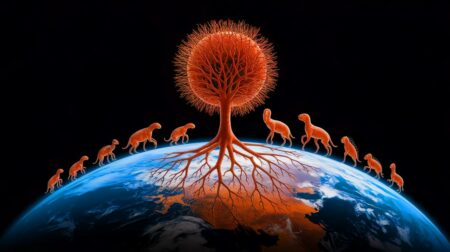Russia, the world’s largest country, is home to a fifth of forests on the planet and protecting those forests is crucial to mitigating climate change.
Encouragingly, Russia’s forests have accumulated a large amount of biomass since the collapse of the Soviet Union three decades ago when data on the extent of the country’s forests were last compiled.
The authors of a new study now estimate that Russian forests have grown by as much as 40% of biomass compared to those outdated data kept in the country’s State Forest Register. This means that local forests sequester far more carbon dioxide than previously thought, the scientists report.
“Since the collapse of the Soviet Union and transition to a new forest inventory system, Russia has reported almost no change in growing stock (+ 1.8%) and biomass (+ 0.6%). Yet remote sensing products indicate increased vegetation productivity, tree cover and above-ground biomass,” they explain.
“Our estimate for the year 2014 is 111 ± 1.3 × 109 m3, or 39% higher than the value in the State Forest Register. Using the last Soviet Union report as a reference, Russian forests have accumulated 1163 × 106 m3 yr-1 of growing stock between 1988–2014, which balances the net forest stock losses in tropical countries,” they add.
In other words, even as once dense forests in places such as the island of Borneo have been cut down or thinned to create new agricultural land in recent decades, forests in the vast interior of Russia have managed to continue growing largely undisturbed.
In all, between 1988 and 2014 carbon sequestration in live biomass of managed forests across Russia was 47% higher than data reported in the country’s National Greenhouse Gases Inventory. As a result, the country’s forests have great potential to sequester carbon from the atmosphere and so help mitigate global climate change.
In addition, Russia’s vast stretches of trees can also continue to harbor plenty of biodiversity and provide habitats for critically endangered species such as the Amur tiger in Siberia in the far eastern region of the country. Needless to say, protecting the country’s largely intact forests will remain a high priority.
“We are talking here about the largest country in the world hosting the largest share of the largest land biome globally — the circumboreal belt of forest — which is highly climate relevant,” says Florian Kraxner, research group leader of the Agriculture, Forestry, and Ecosystem Services Research Group research institute.
“Imagine what just a few percent up or down with regard to the amount of forest biomass available and its consequent carbon sequestration potential can make globally,” Kraxner adds.
Did you like it? 4.4/5 (27)








